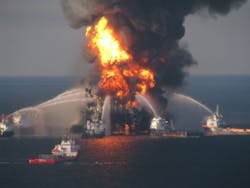Offshore staff
HOUSTON – BP has released a report finding that the Gulf of Mexico environment is returning to its baseline condition in the five years since the Deepwater Horizon oil spill. The Gulf of Mexico Environmental Recovery and Restorationreport also indicates that impacts from the spill largely occurred in the spring and summer of 2010.
The report is based on scientific studies that government agencies, academic institutions,BP and others conducted as part of the spill response, the ongoing Natural Resource Damage Assessment (NRDA) process or through independent research.
The report also looks at the BP-funded early restoration projects to speed the recovery of natural resources in the GoM that were injured as a result ofthe spill.
According to the report, available data does not indicate the spill caused any significant long-term population-level impact to species in the GoM. For example, NRDA data do not reveal ongoing adverse impacts to bird populations linked to the spill beyond the initial, limited acute mortality in 2010. National Oceanic and Atmospheric Administration (NOAA) data show that fish populations are robust, and commercial landings generally have been consistent with pre-spill trends and ranges. Findings published by a group of researchers, including scientists working with the NRDA trustees, show the accident did not affect most deepwater coral communities.
Additionally, the report discusses that several key factors lessened the spill’s impact. The spill took place in deepwater, far offshore and in a temperate climate, allowing the oil to break down. The type of light crude oil involved in this spill also degrades and evaporates faster than heavier oils. At the same time, the offshore response and shoreline cleanup – for which BP spent more than $14 billion and workers devoted more than 70 million personnel hours – mitigated the damage.
It also says that affected areas are recovering faster than predicted. For example, in 2010 the US Coast Guard documented 86 mi (138 km) of marsh that were categorized as heavily oiled. By early 2014, after the response effort as well as natural attenuation, just 0.7 mi (1.1 km) remained heavily oiled and were recovering naturally.
Injured natural resources are being restored in an unprecedented fashion, according to the report. In 2011, BP voluntarily agreed to spend $1 billion on these projects to expedite the restoration of natural resources in the Gulf while the NRDA process was ongoing. As of December 2014, BP and the federal and state natural resource trustees had agreed on 54 early restoration projects totaling about $698 million.
The NRDA is the process through which the US government, state agencies, and BP conduct studies to identify injuries to natural resources resulting from theDeepwater Horizonaccident, as well as the best way of restoring injured resources and the amount of money required to do so. This ongoing NRD assessment is the largest environmental evaluation of its kind ever conducted, spanning nearly five years and costing around $1.3 billion to date. BP also has committed to pay $500 million over 10 years to support independent research through the Gulf of Mexico Research Initiative.
In addition to those costs, BP has spent more than $28 billion on response, cleanup, early restoration and claims payments.
03/16/2015



